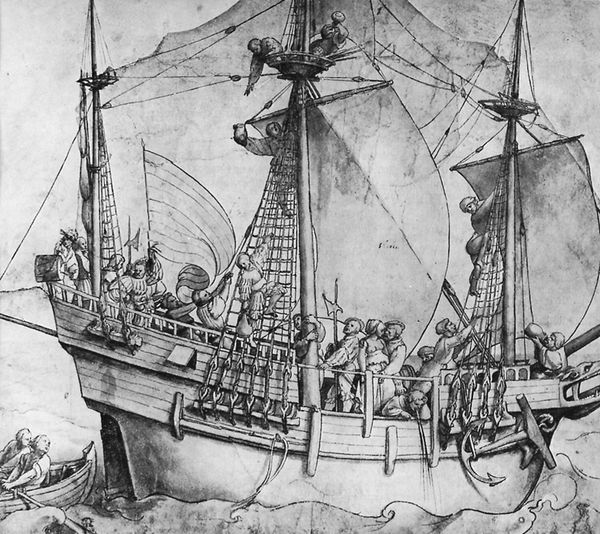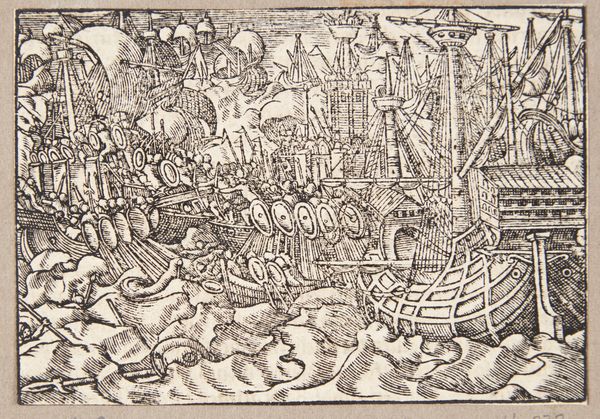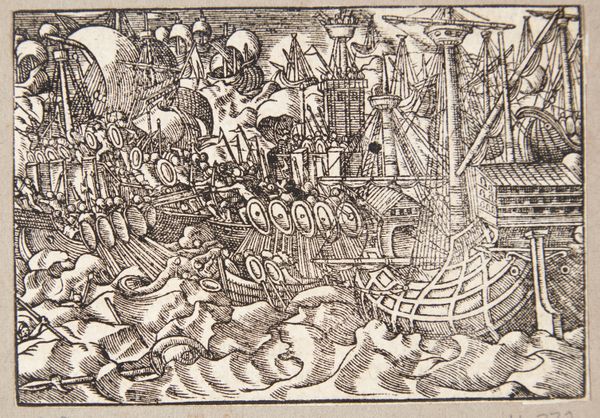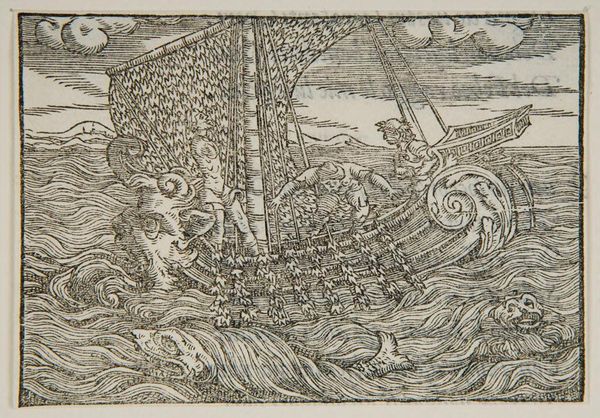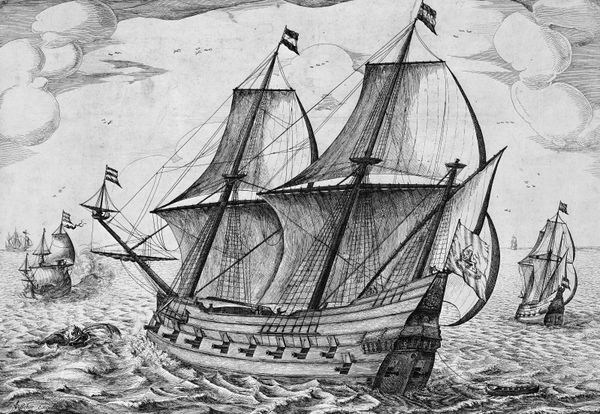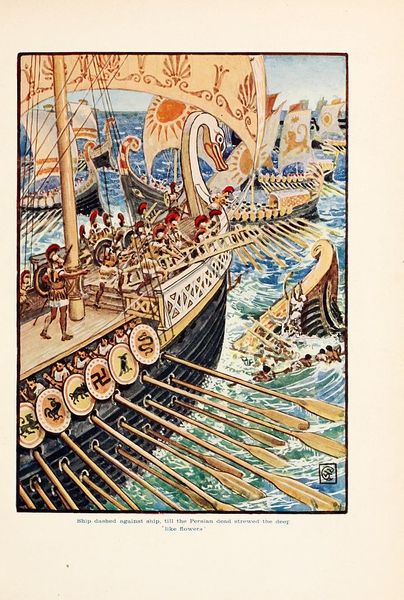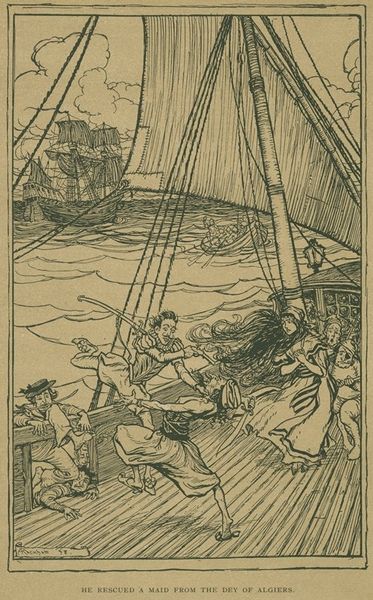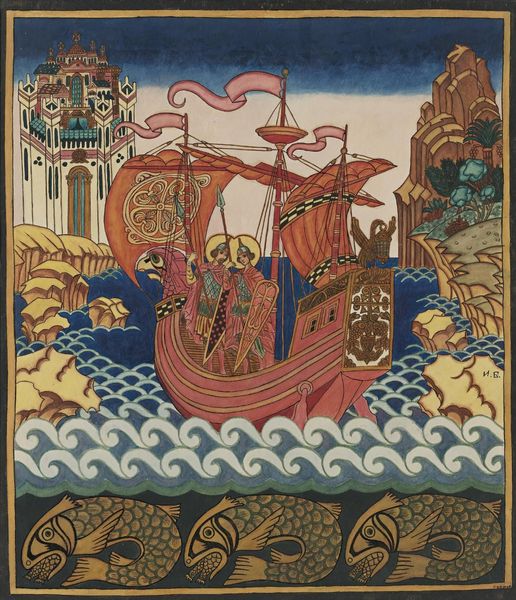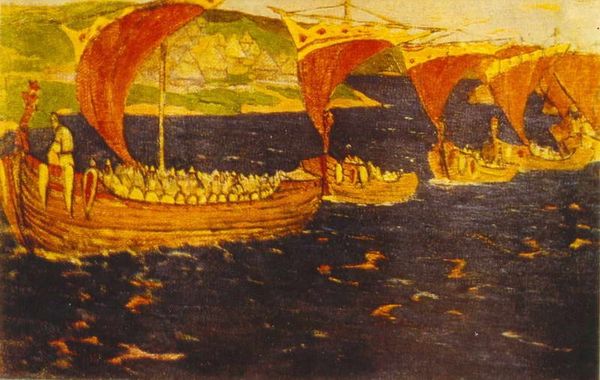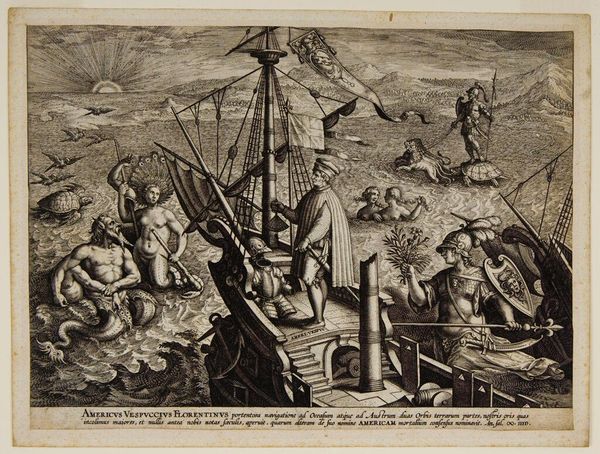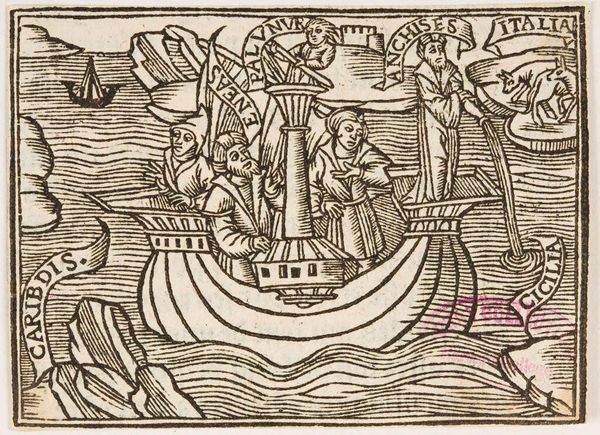
mixed-media, watercolor
#
mixed-media
#
landscape
#
watercolor
#
russian-avant-garde
#
watercolour illustration
#
history-painting
#
mixed medium
#
mixed media
#
watercolor
Dimensions: 9.3 x 14 cm
Copyright: Public domain
Editor: Here we have Nicholas Roerich’s mixed-media "Illustration to 'Feast of Peter the Great,'" from 1901. It's a flurry of jagged, mosaic-like forms showing ships on what I assume is the sea, along with some type of building to the left, all rendered in watercolor. The patchwork effect really stands out. What can you tell me about how Roerich approached his materials? Curator: The immediate appeal, of course, stems from Roerich’s distinct methods of production. Think about it: what materials are typically employed to convey a sense of grand historical narrative, and how does Roerich disrupt that expectation through his material choices? Editor: Well, history paintings are typically done with oil paints, aren’t they? Something more durable. This feels deliberately... ephemeral. Almost like a memory fragmenting. Curator: Precisely! And what does that choice communicate, socially and culturally? Consider Russia at the turn of the century: industrialization, social unrest, a questioning of traditional hierarchies. Watercolor and mixed media, often associated with craft and illustration rather than “high art,” become potent tools for challenging those hierarchies. Editor: So, the material choice isn’t just about aesthetics; it's about undermining established power structures, using supposedly “lesser” materials to depict something of national importance? Curator: Exactly. The "Feast of Peter the Great," an event celebrating imperial power, is rendered using materials that subtly critique that very power by challenging artistic conventions and norms. Think about the labour involved too – the intense work in creating what appears to be the patchwork. How does that resonate with the changing labour landscape in early 20th Century Russia? Editor: It gives a whole new layer of meaning, connecting the materials and the making of the artwork to broader social issues. I wouldn't have thought about that if you hadn't pointed out the context. Curator: That's precisely why we look to the means of production to broaden our understanding of even what seems a purely historical depiction. Editor: It definitely reframes my view of the piece!
Comments
No comments
Be the first to comment and join the conversation on the ultimate creative platform.
